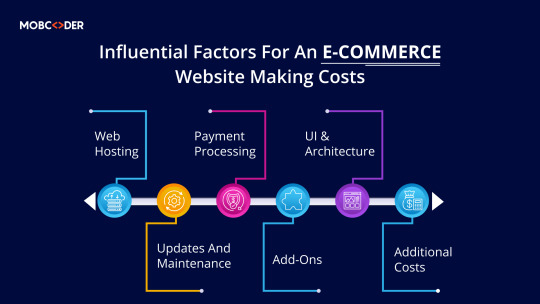#Java for Mobile App
Explore tagged Tumblr posts
Link
7 Unbeatable Advantages of Using Java for Mobile App Development
Are you looking forward to an ideal platform to build android apps? Read on how Java for mobile development is your one-stop solution.
Checkout here: https://techplanet.today/post/7-unbeatable-advantages-of-using-java-for-mobile-app-development
#Java for Mobile App Development#Java for Mobile App#Java#Mobile App Development#Java programming language#programming languages#Java development#Java app development#Java mobile application development#Java framework
0 notes
Text

#orkut#Mobile app#app#application#webcore#techcore#2000s#java#old web#old internet#mobile internet#internetcore#2000s web#y2k#y2kcore
21 notes
·
View notes
Text

Summer Internship Program 2024
For More Details Visit Our Website - internship.learnandbuild.in
#machine learning#programming#python#linux#data science#data scientist#frontend web development#backend web development#salesforce admin#salesforce development#cloud AI with AWS#Internet of things & AI#Cyber security#Mobile App Development using flutter#data structures & algorithms#java core#python programming#summer internship program#summer internship program 2024
2 notes
·
View notes
Text

What to Look for When Hiring Android App Developers | AIS Technolabs
Discover the key qualifications and skills to seek in Android app developers. Make informed hiring decisions with our essential guide
#Android Development#Hiring Android Developers#Java vs Kotlin#Mobile App Development#Tech Stack#Android SDK#App Security#Cross-Platform Development#AI and Machine Learning#IoT Integration#5G Technology#AR and VR#Developer Skills#Project Management#App Development Trends
0 notes
Text
Are you seeking a job and want to improve your IT skills to increase your chances of getting hired?
IT skills development courses can significantly enhance employability in today's competitive job market. Here are some essential courses to consider:
1. Programming Languages: Learn popular programming languages like Python, Java, JavaScript, or C++. These languages are widely used across industries and are in high demand by employers.
2. Web Development: Acquire HTML, CSS, and JavaScript skills to create interactive and responsive websites. Understanding web development fundamentals opens up web design, front-end development, and UX/UI opportunities.
3. Database Management: Gain proficiency in database management systems like SQL and NoSQL. Database skills are crucial for roles in data analysis, data science, and backend development.
4. IT Project Management: Effective project management skills are essential for overseeing IT projects from start to finish. Courses covering project management methodologies such as Agile or Scrum, along with tools like Jira or Microsoft Project, can help you become a competent IT project manager.
Enrolling in IT skill development courses can help you improve your knowledge and proficiency in areas where employers place high value. Remember to showcase your newly acquired skills on your resume and LinkedIn profile to attract potential employers.
For comprehensive IT training courses, consider AnA Academy. With a strong reputation for excellence and an industry-relevant curriculum, AnA Academy provides the perfect environment for refining your IT skills and advancing your career prospects.
#computer academy#Best Computer Institute#IT Training Institute#Computer Centre#Best Software training institute#Computer Training Institute#it professional course#it training course#mobile app developer course#mobile app development course#web developer course#web development course#android course#java course#kotlin course#ios course#swift course#flutter course#reactnative course#php course#laravel course#mern stack developer course
1 note
·
View note
Text
The World of Android Software Development Company

At Sciflare, we dive deep into the world of Android software development, crafting exceptional apps that meet your specific needs. Android software development company: Our team of experts breathes life into your ideas, turning them into intuitive and user-friendly experiences for millions of Android users. Reach us- Sciflare Technologies
#android#software#mobile app development#software company#mobile technology#application services#business#android world#kotlin#java
0 notes
Text
Building Applications with Spring boot in Java
Spring Boot, a powerful extension of the Spring framework, is designed to simplify the process of developing new Spring applications. It enables rapid and accessible development by providing a convention-over-configuration approach, making it a preferred choice for many developers. This essay delves into the versatility of Spring Boot, exploring the various types of applications it is commonly used for, highlighting its features, benefits, and practical applications across industries.
Origins and Philosophy
Spring Boot was created to address the complexity often associated with Spring applications. By offering a set of auto-configuration, management, and production-ready features out of the box, it reduces the need for extensive boilerplate configuration. This framework adheres to the "opinionated defaults" principle, automatically configuring Spring applications based on the dependencies present on the classpath. This approach significantly accelerates development time and lowers the entry barrier for businesses looking to hire Java developers.
Web Applications
Spring Boot is widely recognized for its efficacy in building web applications. With embedded servers like Tomcat, Jetty, or Undertow, developers can easily create standalone, production-grade web applications that are ready to run. The framework's auto-configuration capabilities, along with Spring MVC, provide a robust foundation for building RESTful web services and dynamic websites. Spring Boot also supports various templates such as Thymeleaf, making the development of MVC applications more straightforward.
Microservices
In the realm of microservices architecture, Spring Boot stands out for its ability to develop lightweight, independently deployable services. Its compatibility with Spring Cloud offers developers an array of tools for quickly building some of the common patterns in distributed systems (e.g., configuration management, service discovery, circuit breakers). This makes Spring Boot an ideal choice for organizations transitioning to a microservices architecture, as it promotes scalability, resilience, and modularity. Microservices is one important reason why businesses look to migrate to Java 11 and beyond.
Cloud-Native Applications
Spring Boot's design aligns well with cloud-native development principles, facilitating the creation of applications that are resilient, manageable, and observable. By leveraging Spring Boot's actuator module, developers gain insights into application health, metrics, and audit events, which are crucial for Java development services companies maintaining and monitoring applications deployed in cloud environments. Furthermore, Spring Boot's seamless integration with containerization tools like Docker and Kubernetes streamlines the deployment process in cloud environments.
Enterprise Applications
Spring Boot is adept at catering to the complex requirements of enterprise applications. Its seamless integration with Spring Security, Spring Data, and Spring Batch, among others, allows for the development of secure, transactional, and data-intensive applications. Whether it's managing security protocols, handling transactions across multiple databases, or processing large batches of data, Spring Boot provides the necessary infrastructure to develop and maintain robust enterprise applications.
IoT and Big Data Applications
The Internet of Things (IoT) and big data are rapidly growing fields where Spring Boot is finding its footing. By facilitating the development of lightweight, high-performance applications, Spring Boot can serve as the backbone for IoT devices' data collection and processing layers. Additionally, its compatibility with big data processing tools like Apache Kafka and Spring Data makes it suitable for building applications that require real-time data processing and analytics.
Summary
Spring Boot's versatility extends across various domains, making it a valuable tool for developing a wide range of applications—from simple CRUD applications to complex, distributed systems. Its convention-over-configuration philosophy, combined with the Spring ecosystem's power, enables developers to build resilient, scalable, and maintainable applications efficiently.
In essence, Spring Boot is not just a tool for one specific type of application; it is a comprehensive framework designed to meet the modern developer's needs. Its ability to adapt to various application requirements, coupled with the continuous support and advancements from the community, ensures that Spring Boot will remain a crucial player in the software development landscape for years to come. Whether for web applications, microservices, cloud-native applications, enterprise-level systems, or innovative fields like IoT and big data, Spring Boot offers the flexibility, efficiency, and reliability that modern projects demand. The alternative Spring cloud also offers variety of advantage for developers building microservices in java with spring boot and spring cloud.
#software development#web development#mobile app development#java full stack developer#java application development#javaprogramming#microservices
0 notes
Text

🌟 Dreaming of becoming a Salesforce expert? Your journey starts with REDOT Academy's Internship Courses! ☁️💼
Unlock the power of Salesforce with hands-on experience and expert guidance from industry professionals.
📌 Explore our courses:
* Full-Stack Development
* Digital Marketing & SEO
* UI & UX Design
* Salesforce
* Web Development
* Web Design
* Java
* Python
* Mobile App Development
Course Ah Padinga ! Job Ah Pudinga !
🌐 Learn more at http://www.redotacademy.com
📞 Have questions? Contact us at +91-7825011100
#Salesforce #TechInternship #REDOTAcademy #CloudCareer #TrailblazerJourney #UnlockYourPotential #BuildApps #AccelerateYourCareer #TechCareer #LearnToCode #madurai #inernship #trainingwithplacement #training #internshiptraining
#Full-Stack Development#Digital Marketing & SEO#UI & UX Design#Salesforce#Web Development#Web Design#Java#Mobile App Development#Course Ah Padinga ! Job Ah Pudinga !#TechInternship#REDOTAcademy#CloudCareer#TrailblazerJourney#UnlockYourPotential#BuildApps#AccelerateYourCareer#TechCareer#LearnToCode#madurai#inernship#trainingwithplacement#training#internshiptraining
0 notes
Text
Head-to-Head: PHP vs. Java - Which Language Reigns Supreme?

Head-to-Head: PHP vs. Java - Which Language Reigns Supreme? The debate between PHP and Java has long been a topic of discussion among developers, with proponents of each language advocating for its superiority in various aspects of web development, enterprise applications, and system architecture. In this head-to-head comparison, we'll delve into the strengths, weaknesses, and use cases of PHP and Java to determine which language reigns supreme in the world of software development.
Overview of PHP:
PHP, initially created as a server-side scripting language for web development, has gained widespread popularity for its simplicity, flexibility, and ease of use. Here are some key considerations regarding PHP:
Simplicity and Ease of Use:
PHP is renowned for its straightforward syntax and easy learning curve, making it accessible to beginners and experienced developers alike.
Its scripting nature allows developers to embed PHP code directly into HTML, enabling dynamic content generation and server-side processing.
Web Development Focus:
PHP is primarily designed for web development, with built-in features for processing form data, interacting with databases, and generating dynamic web pages.
It integrates seamlessly with popular web servers like Apache and Nginx and databases like MySQL, PostgreSQL, and SQLite.
Vibrant Ecosystem:
PHP boasts a vibrant ecosystem of frameworks, libraries, and tools that streamline web development tasks and accelerate project delivery.
Frameworks like Laravel, Symfony, and CodeIgniter provide robust MVC architecture, routing, ORM, and other features for building scalable and maintainable web applications.
Overview of Java:
Java, renowned for its platform independence, scalability, and robustness, is widely used for building enterprise-grade applications, backend systems, and large-scale distributed systems. Here are some key considerations regarding Java:
Write Once, Run Anywhere (WORA):
Java's WORA principle enables developers to write code once and run it on any platform that supports Java, including Windows, macOS, Linux, and various mobile devices.
This platform independence is achieved through the Java Virtual Machine (JVM), which provides a consistent runtime environment for Java applications.
Scalability and Performance:
Java offers scalability and performance advantages, making it suitable for building large-scale enterprise applications that can handle high volumes of concurrent users and transactions.
Its robust type system, memory management features, and multithreading support contribute to improved application performance and responsiveness.
Enterprise Integration:
Java's extensive ecosystem and enterprise-grade features make it well-suited for integrating with existing systems, middleware, and enterprise solutions.
Frameworks like Spring Boot, Jakarta EE (formerly Java EE), and Apache Camel provide comprehensive support for building enterprise applications, RESTful APIs, and microservices.
Head-to-Head Comparison:
Performance:
Java generally offers better performance and scalability compared to PHP, especially for large-scale enterprise applications and systems with high concurrency requirements.
PHP's performance has improved over the years, but it may still lag behind Java in terms of raw processing power and efficiency.
Developer Productivity:
PHP's simplicity and ease of use contribute to faster development cycles and rapid prototyping, making it suitable for small to medium-sized web projects.
Java's verbose syntax and boilerplate code may require more time and effort upfront but can lead to more maintainable and scalable codebases over the long term.
Ecosystem and Tooling:
PHP has a robust ecosystem of frameworks, libraries, and tools tailored for web development, with a focus on simplicity, flexibility, and ease of use.
Java's ecosystem is broader and more diverse, catering to a wide range of use cases, including web development, enterprise integration, mobile development, and big data processing.
Use Cases and Project Requirements:
The choice between PHP and Java ultimately depends on the specific requirements, scalability needs, and performance considerations of the project at hand.
PHP may be a better fit for small to medium-sized web projects, startups, and rapid prototyping, while Java shines in large-scale enterprise applications, middleware, and mission-critical systems.
Conclusion:
In conclusion, both PHP and Java have their strengths and weaknesses, making them suitable for different types of projects and development scenarios. While PHP excels in simplicity, ease of use, and rapid development, Java boasts scalability, performance, and enterprise-grade features. The choice between PHP and Java should be based on the specific requirements, project goals, and scalability needs of the application, ensuring that developers choose the language that best aligns with their project's objectives and long-term vision. Ultimately, the language that reigns supreme depends on the context of the project and the priorities of the development team.
#software engineering#Php Vs Java#application development#app development#mobile app development#programming
0 notes
Text
Mobcoder offers the best SAP migration services in Dubai
Mobcoder stands out as the preferred choice for Best SAP Migration Services in Dubai due to its expertise, experience, and commitment to delivering exceptional results. With a team of seasoned professionals and a proven track record of successful projects, Mobcoder offers unparalleled value to its clients.
Click here - https://www.quora.com/profile/Mobcoder-1/Best-SAP-Migration-Services-in-Dubai-Mobcoder

#best SAP migration services in Dubai#SAP Data Migration Services in Dubai#Voice App Development Company in Duabi#Java Development Company in Dubai#AI development Services in Dubai#Best web app development services in Dubai#Mobile App Development Company in Dubai#Data Analytics Companies in Dubai
1 note
·
View note
Text
Dedicated Java Web Development Services
With our dedicated Java programmers, we deliver end-to-end web development services. Java, the programmer's first choice, creates dynamic websites with Servlets and JSPs for reliable solutions.
0 notes
Text
How Does IoT Affect the Development of Mobile Apps?

The era of the Internet of Things (IoT) is undeniably shaping the landscape of application development. IoT, a network of interconnected computing devices exchanging data without direct human interaction, holds a significant role in various sectors. Let’s explore the impact of IoT on mobile app development, focusing on key aspects:
Enhanced Security Measures
In the realm of IoT, where data traverses between devices and the cloud, security is paramount. Developers face the challenge of safeguarding sensitive information from potential hacks. IoT mobile applications empower developers to implement robust security protocols and encryption methods, fortifying data protection and mitigating the risk of information leaks.
Improved Connectivity Options
Businesses across industries require seamless connectivity tools to facilitate daily operations. IoT contributes to mobile app development by enhancing connectivity between devices, mobile applications, and various networks. This includes optimizing connections through NFC, Wi-Fi, Bluetooth, and other contemporary and traditional options, providing a more versatile user experience.
Streamlined Convenience
IoT eliminates the need for extensive manual effort in app development. Devices can now automate and manage tasks independently, enriching the overall user experience. IoT mobile app developers can create user-friendly applications that simplify and enhance daily tasks, contributing to more convenient and efficient user interaction.
Niche-Based Development
While IoT is gaining popularity, it remains a specialized field requiring expertise. Niche-based IoT application development demands a deep understanding of IoT concepts. To excel in this dynamic domain, outsourcing to a top mobile app development company with an in-house team of experts, such as Devstree, becomes crucial. Staying updated and eager to learn is essential in this ever-evolving landscape.
Cost-Effectiveness
IoT offers significant cost-effectiveness by automating tasks, boosting engagement, and improving brand image, leading to higher returns on investment (ROI). While integrating IoT technology may initially raise development costs, the long-term benefits of efficiency and engagement outweigh the initial investment.
Conclusion
IoT is a transformative force that simplifies daily activities through interconnected devices. Devstree, recognized as a top IoT development company in Australia, emphasizes client satisfaction through innovative solutions. As IoT continues to evolve, staying informed and adapting to new developments is crucial for success in this dynamic field. For further information, visit the Devstree Australia website.
#australia#devstreeau#mobileappdevelopment#mobile app developer company#iphone#web app development#ios#mobile app company#iot app development#iot applications#blockchain#technology#html#css#javascript#java
0 notes
Text

Learn and Build Summer Internship Program
For more details visit - Internship.learnandbuild.in
#data structures & algorithms#Java Core#Python Programming#Frontend web development#Backend web development#data science#machine learning & AI#Salesforce Admin#Salesforce Development#Cloud AI with AWS#Internet of things & AI#Cyber Security#Mobile app development using flutter
0 notes
Text
Discover the top programming languages poised to dominate app development in 2024.
0 notes
Text
At Profits and Pizza, we're passionate about harnessing the power of technology to transform businesses and empower individuals. We believe in creating solutions that not only address current challenges but also anticipate future needs, ensuring our clients remain at the forefront of innovation.
1 note
·
View note
Text
The Power of Selenium Automation: Bridging Java and Python for Web Testing
In the realm of software development, the importance of testing cannot be overstressed. It is the linchpin that ensures the reliability, efficiency, and quality of software before it reaches the end-user. As web applications become increasingly complex and integral to business operations, the need for effective and efficient testing methodologies has become paramount. Selenium automation has emerged as a leading solution, offering a powerful platform for automating web browser actions. This article delves into the nuances of Selenium automation, focusing on its implementation with two of the most popular programming languages: Java vs Python.
Introduction to Selenium Automation
Selenium is an open-source automation tool primarily used for automating web browsers. It provides a rich set of features that allow testers and developers to simulate user interactions with web elements, such as clicking buttons, entering text, and navigating through pages. Selenium supports multiple programming languages, including Java, Python, C#, Ruby, and JavaScript, making it a versatile tool for a wide range of development environments.
Selenium with Java
Java, with its robustness and portability, has been a preferred choice for developing large-scale web applications. When paired with Selenium, Java enhances the automation process with its strong typing and object-oriented programming capabilities. This combination is particularly beneficial for projects requiring complex test scenarios and extensive test coverage.
Getting Started with Selenium and Java
To integrate Selenium with Java, one needs to set up the Selenium WebDriver. WebDriver acts as an interface to the web browser, allowing Java code to execute various browser actions. The setup involves adding the Selenium Java client library to the project's build path, either manually or using a build automation tool like Maven or Gradle.
Writing a Test Case in Java
A basic Selenium test case in Java involves initializing the WebDriver, navigating to a web page, performing actions on web elements, and then closing the browser. You may need to hire Java developers for exception handling, which is crucial to manage timeouts and no-element-found errors.
javaCopy code
import org.openqa.selenium.WebDriver; import org.openqa.selenium.chrome.ChromeDriver; public class SeleniumTest { public static void main(String[] args) { // Set path to the ChromeDriver executable System.setProperty("webdriver.chrome.driver", "path/to/chromedriver"); // Initialize the driver WebDriver driver = new ChromeDriver(); // Navigate to a website driver.get("https://example.com"); // Perform actions (e.g., click a button, enter text) // Close the browser driver.quit(); } }
Selenium with Python
Python, known for its simplicity and readability, offers a more straightforward approach to Selenium automation. The dynamic typing and extensive libraries make Python an excellent choice for rapid test script development, particularly for small to medium-sized projects or for teams with varying programming skill levels.
Setting Up Selenium with Python
The integration process involves installing the Selenium package using pip, Python's package manager, and setting up a WebDriver for the browser you intend to automate.
bash
pip install selenium
Crafting a Test Case in Python
Writing a test case in Python follows a similar pattern to Java but with less boilerplate code, thanks to Python's concise syntax.
pythonCopy code
from selenium import webdriver # Path to the ChromeDriver executable driver = webdriver.Chrome('/path/to/chromedriver') # Open a web page driver.get('https://example.com') # Interact with web elements # Close the browser driver.quit()
Comparison and Best Practices
While both Java and Python are effective for Selenium automation, the choice between them often boils down to the project requirements and team expertise. Java may be more suitable for larger, more complex projects due to its strong typing and extensive ecosystem. Python, on the other hand, is ideal for quick script development and projects with a need for rapid prototyping.
Regardless of the language chosen, some best practices should be followed to ensure the effectiveness of Selenium automation:
Modularize Test Code: Break down tests into smaller, reusable modules to enhance maintainability and readability.
Use Page Object Model (POM): Implement POM for a cleaner, more organized approach to automate testing of web pages.
Implement Continuous Integration (CI): Integrate Selenium tests into a CI pipeline to automate the testing process as part of the build cycle.
The programming language, Java has many popular use cases in various industries, as it can be used as embedded systems and enterprise solutions.
Conclusion
Selenium automation, with its support for multiple programming languages, offers a flexible and powerful solution for automating web browser testing. The choice between Java and Python for Selenium automation depends on project-specific needs, team expertise, and the desired balance between robustness and rapid development. By adhering to best practices and leveraging the strengths of each language with java development services your teams can harness the full potential of Selenium automation to ensure their web applications meet the highest standards of quality and reliability.
#software development#mobile app development#web development#java full stack developer#java application development#java development company
0 notes